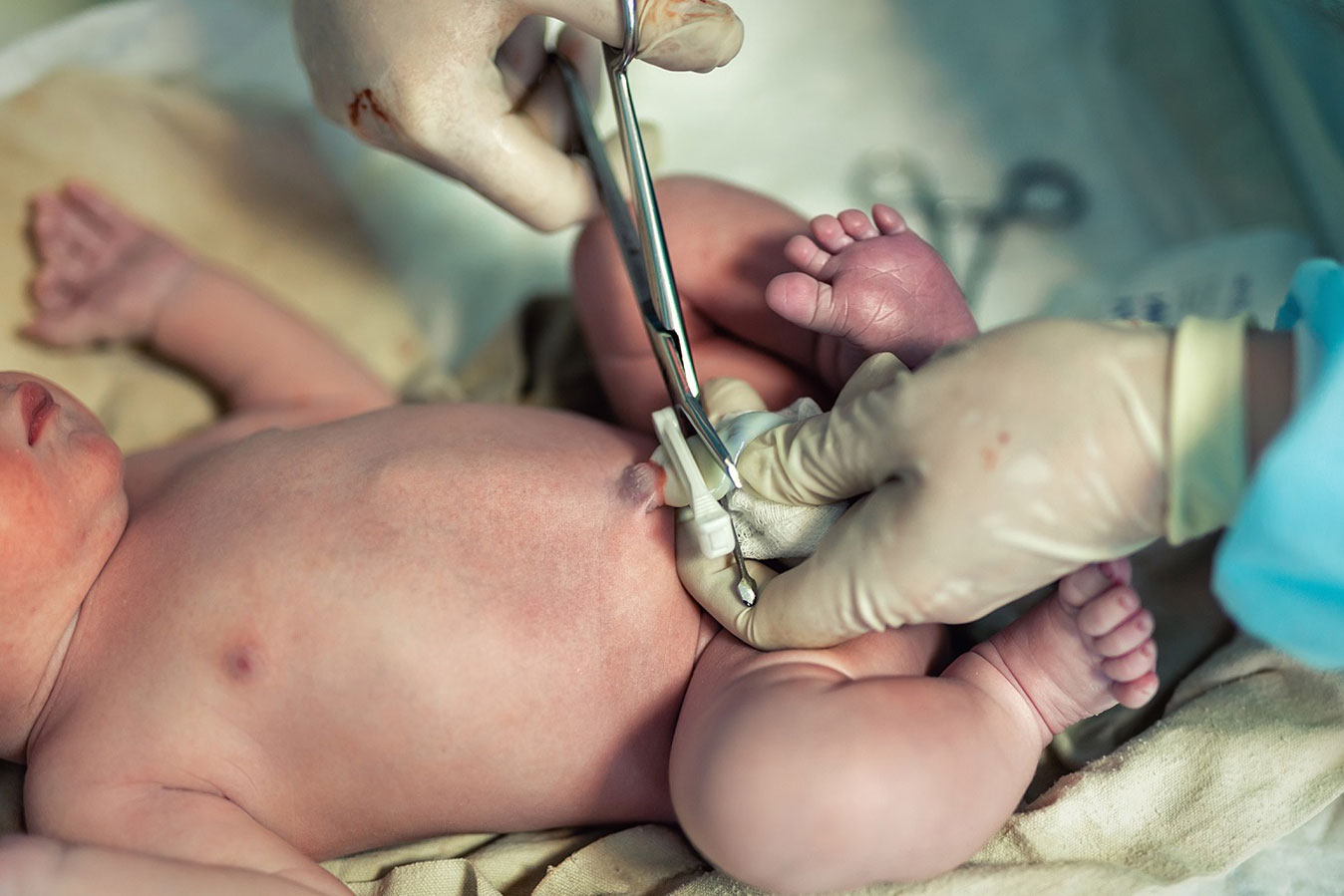New research lends further weight to the benefits of delayed cord clamping, finding waiting for at least two minutes to clamp the umbilical cord of premature babies at birth could decrease a child’s risk of death.
Waiting for two minutes or longer to clamp the umbilical cord of a premature baby soon after birth could decrease the child’s risk of death by more than half, relative to immediate clamping.
The findings, published in two companion papers in The Lancet, examined clinical trial data and outcomes of thousands of premature babies which had delayed cord clamping compared to those whose cord was clamped immediately after birth.
Delaying clamping of the umbilical cord which allows blood to flow from the placenta to the baby while its lungs fill with air is thought to help ease the transition to breathing in the infant.
“Our new findings are the best evidence to date that waiting to clamp the umbilical cord can help save the lives of some premature babies,” said first author Dr Anna Lene Seidler at the NHMRC Clinical Trials Centre, University of Sydney.
“We are already working with international guideline developers to make sure these results are reflected in updated guidelines and clinical practice in the near future.”
Delayed cord clamping is now recommended routine practice for babies born at full term. However, while previous research has shown potential benefit for premature babies, best practice for this vulnerable group remained uncertain.
Until recently, clinicians generally cut the cord of preterm babies immediately so urgent medical care could be given.
These uncertainties have led to different recommendations in national and international guidelines. For preterm infants not requiring resuscitation at birth, the Australian and New Zealand Committee on Resuscitation (ANZCOR) suggest delaying cord clamping for at least 30 seconds.
The World Health Organization (WHO) and the UK’s National Institute for Health and Care Excellence (NICE) recommend delayed umbilical cord clamping (not earlier than one minute after birth) for improved maternal and infant health and nutrition outcomes.
For preterm babies requiring resuscitation, the WHO recommends immediate clamping, while ANZCOR make no recommendation due to insufficient evidence.
The two studies were the result of a global collaboration among more than 100 international researchers on umbilical cord management, which created one of the largest databases in this research field, with over 60 studies and including more than 9,000 babies.
The first paper using data from 3,292 infants across 20 studies found delayed clamping of the umbilical cord, clamped 30 seconds or more after birth, likely reduced the risk of death in premature babies compared to those whose umbilical cord was clamped immediately after birth.
The second paper analysed data from 47 clinical trials, which involved 6,094 babies, and found waiting at least two minutes before clamping the cord of a premature baby may reduce the risk of death compared with waiting less time to clamp the cord.
In comparing different timings, waiting two or more minutes to clamp the cord had a 91% probability of being the best treatment to prevent death shortly after birth.
Immediate clamping had a very low (<1%) probability of being the best treatment for preventing death.
“Until recently, it was standard practice to clamp the umbilical cord immediately after birth for premature babies so they could be dried, wrapped, and if necessary, resuscitated with ease,” said Dr Sol Libesman, Research fellow at the NHMRC Clinical Trials Centre.
“Our study shows that there is no longer a case for immediate clamping and, instead, presently available evidence suggests that deferring cord clamping for at least two minutes is likely the best cord management strategy to reduce the risk of premature babies dying shortly after birth.”
Situations where more research is needed on cord clamping includes when there are babies requiring immediate resuscitation, unless the hospital is able to provide safe initial breathing help with the cord intact, or in a low-income setting with limited medical resources.
“We need further research into how to best provide immediate care to the sickest premature babies while the cord is intact.
“Even for healthier premature babies, it may seem counter-intuitive to some doctors to defer cord clamping when the baby requires care, but with appropriate training and equipment, along with a full team approach involving midwives, doctors and parents, it is possible to successfully defer cord clamping while ensuring the baby is warm, breathing, and cared for,” said Dr Seidler.








